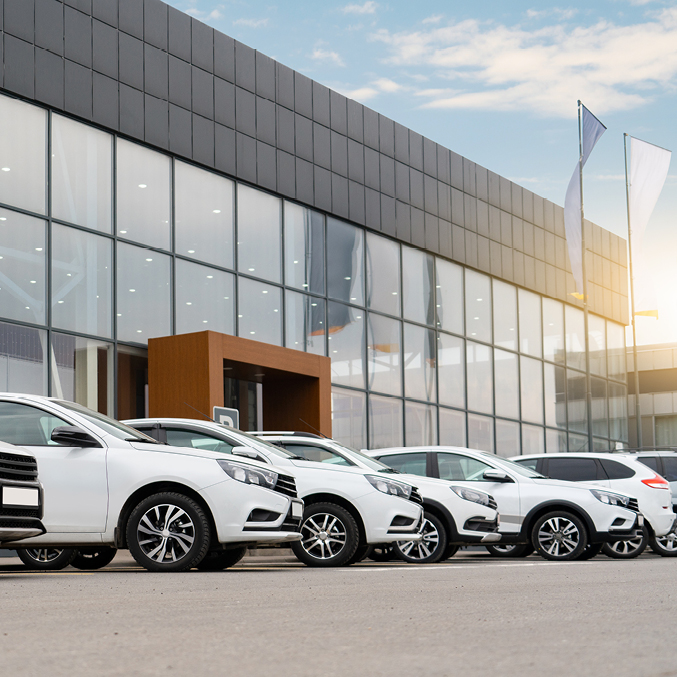IQ
Insight
Quarterly
Q3 | 2025
Germany’s automotive industry faces structural headwinds amid global shifts
The German automotive industry, long a cornerstone of the country’s economic strength and global reputation, is undergoing a period of profound transformation and turbulence. As the sector grapples with a complex mix of structural, financial, and geopolitical challenges, questions remain over whether the industry can successfully navigate the reshaping of its competitive landscape.
A sector in flux
Raw stats are hard to argue with. Germany produced approximately 4.1 million passenger cars in 2024, a figure unchanged from the previous year, but still 12% below pre-pandemic levels in 2019. And while exports remain strong, accounting for around 80% of total production, the domestic market is weakening. The impact has been clear - employment in the sector stands at roughly 773,000 with the industry having shed over 51,000 jobs in the past year and no short-term recovery in sight.

The pressure is being felt through the supply chain as insolvencies rise sharply. The first half of 2025 saw a 21% increase in large-scale bankruptcies in Germany compared to H1 2024, with the automotive supplier sector leading the way with 18 major cases. This signals deep-rooted financial stress, particularly among Tier 1 and Tier 2 suppliers within the family owned “Mittelstand” businesses, which has traditionally been the powerhouse of German manufacturing. German OEMs are facing pricing and profitability challenges in the global markets, and this is often pushed down onto suppliers.
The strategic bind facing OEMs
As the global automotive industry endeavours to race ahead with EVs, Germany’s push toward electrification has yielded mixed results. While November 2024 saw record EV production of 155,700 units, contributing to a total of 1.3 million EVs produced that year, the withdrawal of EV subsidies in 2023 has weakened demand. Consumer confidence remains fragile and the challenge to convince consumers is ever-present. Like the UK, Germany’s charging infrastructure remains sub-scale and requires further investment to provide consumers with confidence and address range anxiety.
This has left OEMs caught in a strategic bind. Maintaining a dual ICE and EV platform business model is increasingly unsustainable, yet transitioning fully to electric models requires massive investment. It is estimated that over €500billion is needed by 2029 to fund capital expenditure on plant conversions, R&D, and scaling new technologies. To compound matters, access to finance to fuel those projects remains uncertain, especially for smaller suppliers, with limited clarity on long-term support mechanisms.
All this is having an impact on the bottom line. German OEMs such as Volkswagen, BMW and Mercedes-Benz have managed to maintain stable EBIT margins despite stagnant revenues. However, they face growing competition from Chinese and American players. BYD and Tesla have rapidly scaled their revenues and profitability, leveraging cost advantages, vertical integration, and aggressive innovation. At the same time German OEMs have faced a rapid decline in their own sales in China, adding to the volume challenges they face.
Forecasts for 2025–2027 show German OEMs lagging in growth compared to their global peers. While BMW and VW expect modest growth (2–3%), BYD and Tesla project double-digit increases, underscoring the widening performance gap.
Innovation in decline?
When considering the long-term impact of the current market conditions, one of the most pressing concerns is Germany’s lag in digital innovation and a slow pace in bringing ideas and products to market. It is apparent that many OEMs and suppliers trail behind in software development and advanced driver assistance and autonomous technologies and functions. This gap is particularly stark when compared to U.S. and Chinese firms which are investing heavily in software-defined vehicles and advanced driver-assistance systems (ADAS).
This isn’t the only long-term strategic risk. Germany’s automotive sector is heavily reliant on imported raw materials, especially for battery production. This dependency exposes the industry to geopolitical risks and cost volatility. There are structural transformation challenges as well with German authorities being relatively slow to provide necessary permits. Volatile energy prices, particularly without access to Russian oil and gas, makes the sector difficult to remain competitive together with an aging workforce where key institutional knowledge will be lost in the coming years.
Resilience and the start of a comeback
Despite the challenges, there are signs of strategic realignment, and the resilience of the sector is kicking a comeback into gear. While there is a long way to go, German OEMs are starting to ramp up investment in alternative propulsion technologies, including hydrogen, e-fuels, and hybrids. Electrification remains central to competitiveness which is driven by regulatory pressure and infrastructure growth.
On the global market, software and connected services are emerging as key differentiators which shape the customer experience. German OEMs are prioritising investment in infotainment, connectivity, and autonomous driving capabilities but, at the same time, are trying to de-risk their supply chains through more localisation of both raw materials and parts. This will be important as China continues to increase its controls over key commodities, including rare earth metals.
However, for some suppliers, they’re changing tact and are pivoting toward the defence sector, repurposing automotive sites for military production. This is a trend that reflects the need for diversification amid market uncertainty but is also one that creates massive potential opportunity too for both automotive and defence sector players.
It is clear that Germany’s automotive industry stands at a crossroads. The sector’s legacy of engineering excellence and global leadership is being tested by structural shifts, financial pressures, and intensifying global competition. Yet, within this turbulence lies the potential for reinvention.
The next chapter will depend on how decisively the industry can pivot, not just toward electrification, but toward a broader transformation in innovation, supply chain resilience, and digital capability. OEMs and suppliers alike must embrace faster decision-making, deeper collaboration, and bold investment in future technologies.
Germany’s automotive sector has the tools and talent to lead again, but the window to act is narrowing. The choices made now will define its relevance in the global automotive landscape for decades to come.






